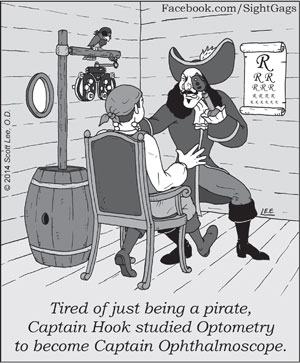I thoroughly enjoyed “ Off Label, But On Target” (January 2015). Off-label uses are necessary for successful practice, yet they present us with dilemmas to navigate on a daily basis. We tread forward when perfect, or even imperfect, clinical science is lacking and the article shed great light on this issue.
One such off-label dilemma is the notion of topical Restasis (cyclosporine A 0.05%, Allergan) for uveitis. Dr. Lou Catania is one of our greatest thought leaders, and I respect his opinion and poster citation with great humility.1 However, the broad evidence for uveitis treatment with Restasis just does not add up. Yes, the drug is a potent anti-inflammatory agent via its white blood cell suppression. However, it has demonstrated poor ocular penetration even at a formulated 2% concentration, which is 40 times the concentration found in commercial Restasis. The 1990 study by BenEzra and colleagues showed no cyclosporine detectable in the anterior chamber at a 2% dosage concentration.2
Top uveitis specialist Stephen Foster, MD, addressed this issue at an American Academy of Ophthalmology lecture, asserting that low concentration and poor penetration via topical route would doom this modality to failure in treating uveitis. My own clinical experience indicates that Restasis patients suffer uveitis in the same manner as everyone else.
Sight Gags by Scott Lee, OD

|
|
Given the logistical difficulties in getting Restasis for many patients, even on label, I fear that this treatment approach may delay definitive care and should be avoided until controlled studies contradict what is known to be true.
—William B. Potter, OD, Freehold, NJ
Dr. Catania responds:
Your letter regarding my comments about Restasis’ use in anterior uveitis and its penetration provides some important information about a topic that has confused me for years.
My history (and comments) regarding topical cyclosporine A (CSA) dates back to the 1990s and through the FDA approval process for Restasis in 2003. Given the positive history of topical CSA with canines (and other animal studies) in ocular inflammation as well as studies proving its value in human use (a list of citations available on request) and, finally, the FDA Restasis Application Research Report (NDA21-023) with pharmacological science and a supportive comment regarding its use in uveitis (“The effects of CSA has been demonstrated in several inflammatory conditions including autoimmune uveitis…”), I found (albeit anecdotally) that use of Restasis at higher than label-recommended dosages and with topical steroids seemed to shorten the course of a number of anterior uveitic inflammations treated.
Nonetheless, you raise a valid point that I have questioned myself about CSA’s ocular penetration. Some literature (e.g., BenEzra study) identifies it as a limitation and some (e.g., Nussenblatt et al.) dispute its relevance.3 I agree with you that further clinical evaluations on pharmacodynamic properties, concentrations and dosages vis-a-vis therapeutic ocular tissue levels with Restasis would be valuable.
1. Michelotti M, Shtein RM, Prabhu SS, Cooney T. Topical cyclosporine A 0.05% for recurrent anterior uveitis. Poster presented at American Society of Cataract and Refractive Surgery Annual Symposium. April 25, 2014; Boston, MA.2. BenEzra D, Maftzir G, de Courten C, Timonen P. Ocular penetration of cyclosporin A. III: The human eye. Br J Ophthalmol. 1990 Jun;74(6):350-2.
3. Nussenblatt RB, Palestine AG, Chan CC. Cyclosporin A therapy in the treatment of intraocular inflammatory disease resistant to systemic corticosteroids and cytotoxic agents. Am J Ophthalmol. 1983 Sep;96(3):275-82.

